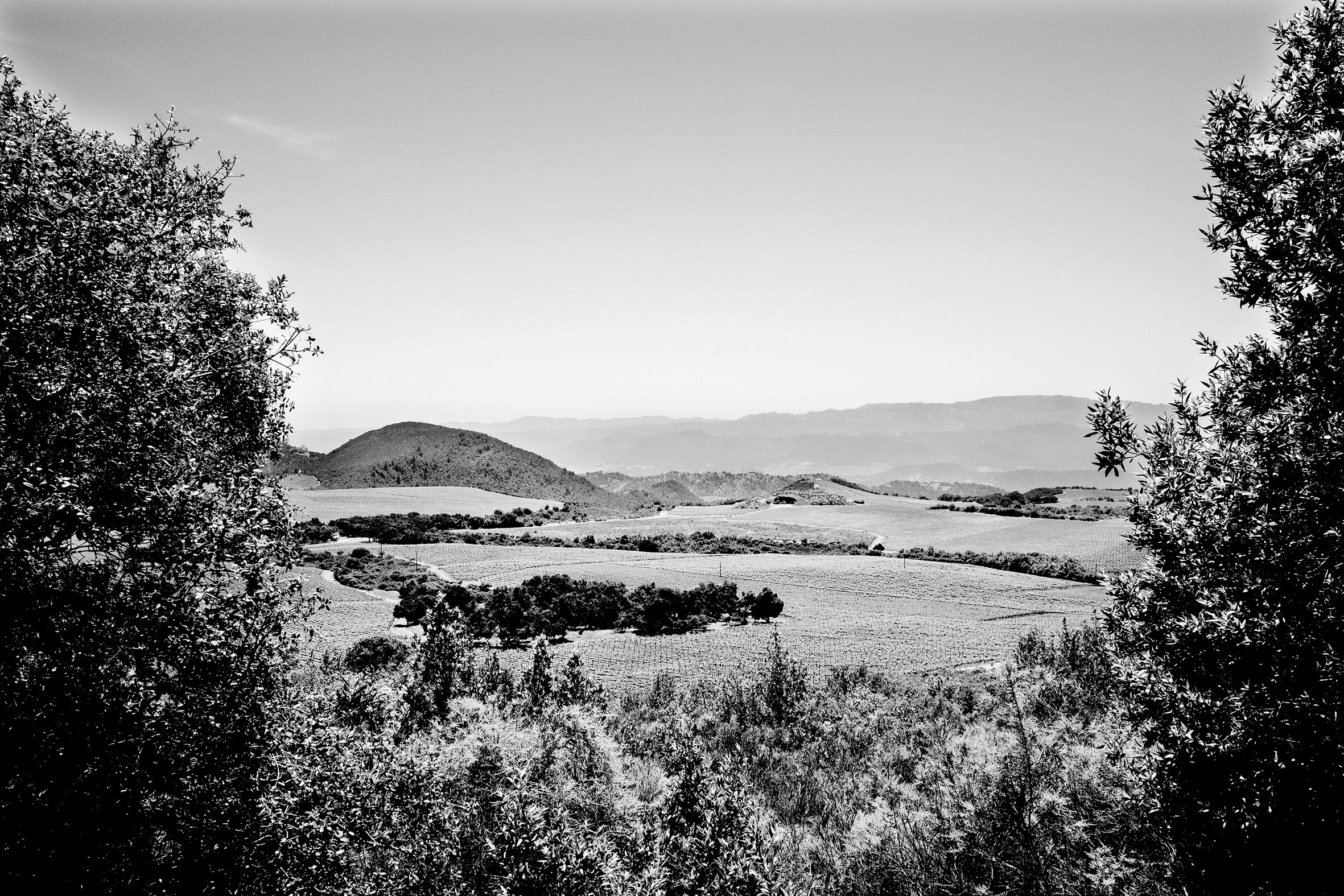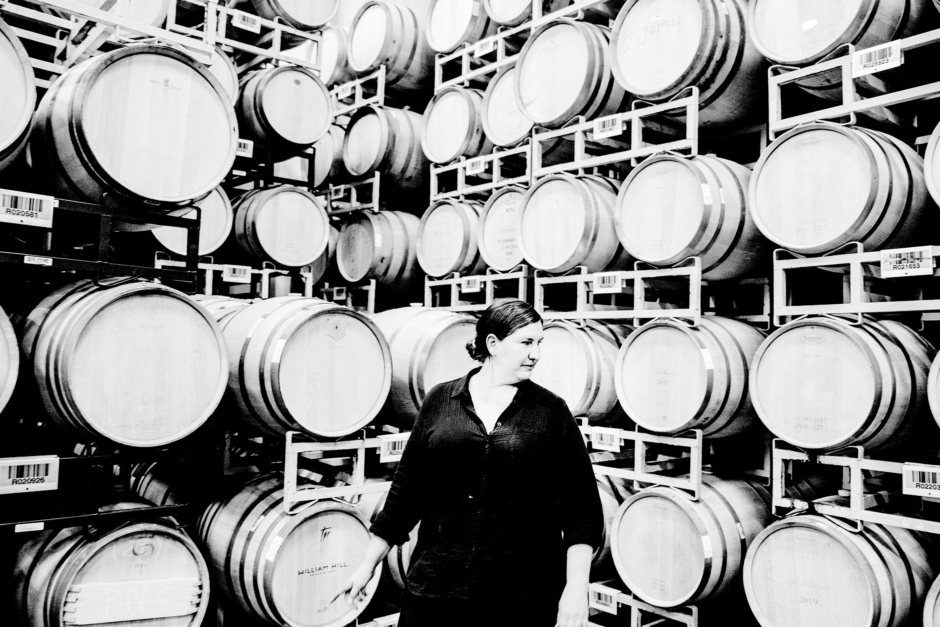10th Aug 2023
Napa Valley’s Stagecoach Vineyard is an enigma to find in the glass. Sometimes it’s savory, mineral-laced, and chewy; other times is rich, bold, and formidably structured. It makes top-tier Cabernet, opulent Chardonnay, rugged Malbec, and zesty Sauvignon Blanc. A site of many different guises and expressions, when I finally had the opportunity to visit the vineyard a couple of months ago, I understood why. It’s enormous.
Red Rock Oasis
“Yeah, it actually should be five or six different vineyards,” said my guide Katie Vogt, unlocking the gates to a red rock oasis. Katie is the winemaker at Pahlmeyer, now owned by Gallo, who also owns Stagecoach Vineyard.
Named for the stagecoach trail that ran through it in the 1800s, comprised of 1200 acres in total with 630 acres planted, Stagecoach Vineyard doesn’t just warrant several different vineyards; it could be subdivided into several AVAs. It runs all the way from Atlas Peak to Pritchard Hill following the line of the Vaca Mountains.
The vast differences in terroir are mind-boggling.

Dr. Jan Krupp spotted this desolate mountain parcel in the early 1990s. Not much more than a sprawling swath of scrubland to the untrained eye, it had been on the market for years, mainly because it would be such a mammoth undertaking for anyone to develop. Composed almost entirely of sheer red rock over volcanic soils, it was considered unplantable. But Jan Krupp saw the potential and was up for a challenge. He, his brother, and a group of his friends enlisted the help of a water witch to find well sources beneath this arid landscape. And, miraculously, they did find an underground stream. Then seven years were spent digging and blasting, piling boulders, adding to the towering rock mountains that punctuate the vineyard landscape today. After removing more than a billion pounds of rock and constructing a rudimentary, winding road, Stagecoach Vineyard was planted. Finally, it was purchased outright by Jan Krupp in 1995.
It remains the largest contiguous vineyard in Napa today.
“This site is so remote it’s off the grid,” Katie explains as we drive past a generator station in our four-wheel-drive SUV. “We plan to go solar here in a few years.”

We stop for a stroll to a vantage point on a cliff overlooking Vangone Vineyard, another relatively recent planting in this area and a component of Pahlmeyer. From here, you can see Pritchard Hill. Stagecoach Vineyard’s altitude ranges from 1400 to 1900 feet, meaning the vines are usually above the fog line, offering a longer growing season. There are 16 different grape varieties planted here, speaking to the incredible amount of site variation, although over 50% is devoted to Cabernet Sauvignon. Stagecoach has 22 distinct Cabernet Sauvignon clones.
"Dr. Krupp really sliced and diced it up."
“Most blocks are under two acres in size. In total, there are 204 individual blocks. Jan’s point was to showcase fruit matched to terroir. So, different clones and rootstocks are matched to all those blocks,” says Katie.
Stagecoach Vineyard was purchased by Gallo in 2016, although Jan Krupp still spends time at the vineyard, overseeing the blocks retained for his Krupp Brothers label. Gallo maintains around 80 external buyers for Stagecoach fruit; approximately 70% of total production goes to outside sales.
Stagecoach Vineyard now supplies Louis M. Martini and Orin Swift, wineries both owned by Gallo. Since 2004, Jason Pahlmeyer had been buying Stagecoach fruit for his namesake winery, which was established in 1986. Pahlmeyer’s Piece de Resistance 2013—given 100 points by Robert Parker—was from Stagecoach Vineyard’s Blocks 4 and 5. Then, in 2019, Gallo bought Pahlmeyer Winery and the brand name, while Jayson Pahlmeyer maintained ownership of his vineyard on Atlas Peak, called Waters Ranch Vineyard. Close to Stagecoach Vineyard, Gallo continues to source fruit from Waters Ranch for the Pahlmeyer wines.

Katie Vogt has been working with Gallo since 2014, first in California Central Coast and then at Louis M. Martini Winery as associate winemaker. Following Gallo’s recent acquisition, she was promoted to winemaker at Pahlmeyer.

“Our total production for Pahlmeyer is now 8000 cases, not including the Jayson label,” said Katie. “The wines are now made at our sibling winery, William Hill. We took out about half their cellar, moved our tanks in, and made our own space there. And we even have our own bottling line now! (Very exciting if you’re a winemaker.) We’ve been making our wine at William Hill since the 2021 vintage.”
Katie has the creative freedom to choose the sources for the various Pahlmeyer labels. Considering Gallo now owns Stagecoach Vineyard, you would think there would be pressure on Pahlmeyer to use more of this in the blends, but it doesn’t appear to be the case. For example, the Raison D’etre was made entirely from the Waters Ranch Vineyard in 2021. The 2021 Piece de Resistance is 100% Cabernet Sauvignon coming 89% from Vangone Vineyard and only 11% from Stagecoach Vineyard.
The 2021 reds are pure and generous.
The upcoming 2021 releases indicate that the spirit and quality of Pahlmeyer are being maintained, supported in part by that continued relationship with Waters Ranch Vineyard. And yet, with the development of a new label (Right Bank) and folding in fruit from neighboring Vangone Vineyard, not to mention cherry-picking Stagecoach, Katie is keeping Pahlmeyer’s label fresh. Even more exciting, she is crafting a focused signature for the wines. These 2021 reds are pure and generous (but not over-generous), with firm textures and savory/mineral undertones that transport you from the glass directly to that red rock oasis.
–
Article & Reviews by Lisa Perrotti-Brown MW
Photography by Johan Berglund

PRODUCERS IN THIS ARTICLE
> Show all wines sorted by scoreMore articles

Cathiard Vineyard New Releases
02nd May 2024
3 tasting notes

Bordeaux 2023 Preliminary Vintage Report and Reviews from Barrel
29th Apr 2024
56 tasting notes

2021 Bordeaux in Bottle and A Modest Proposal
24th Apr 2024
599 tasting notes

Pilcrow’s New Releases
18th Apr 2024
7 tasting notes
Show all articles